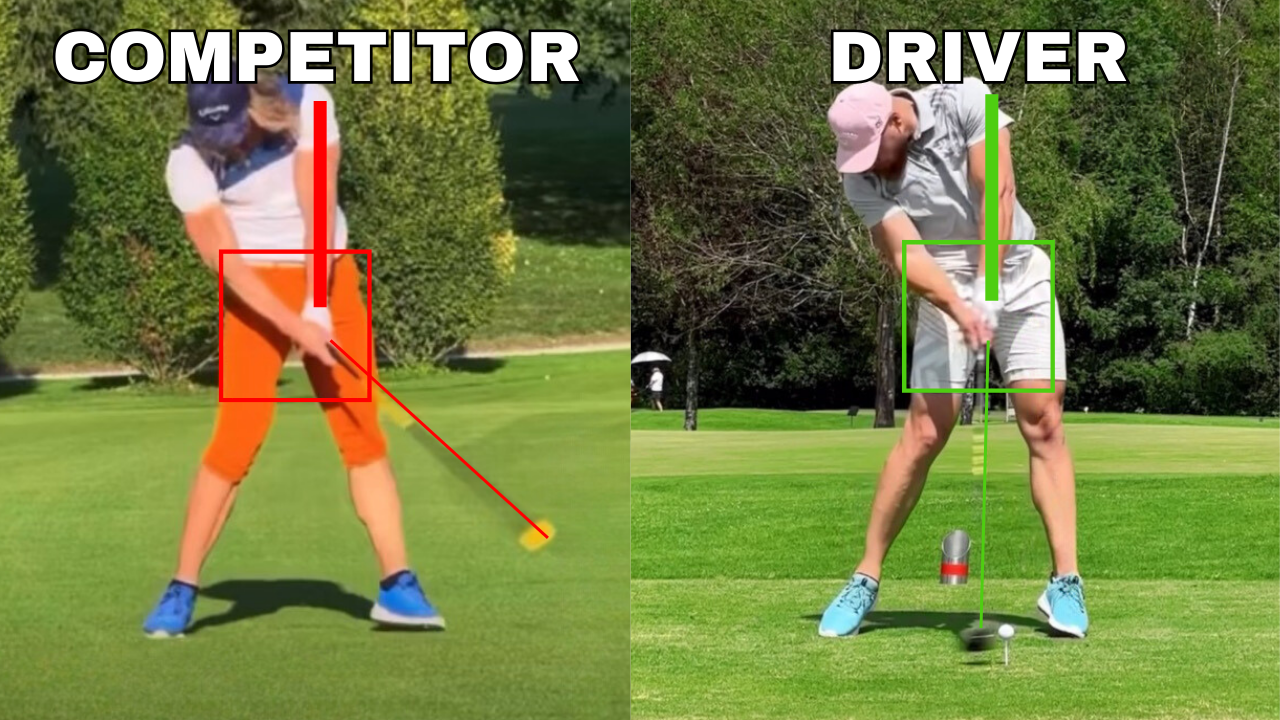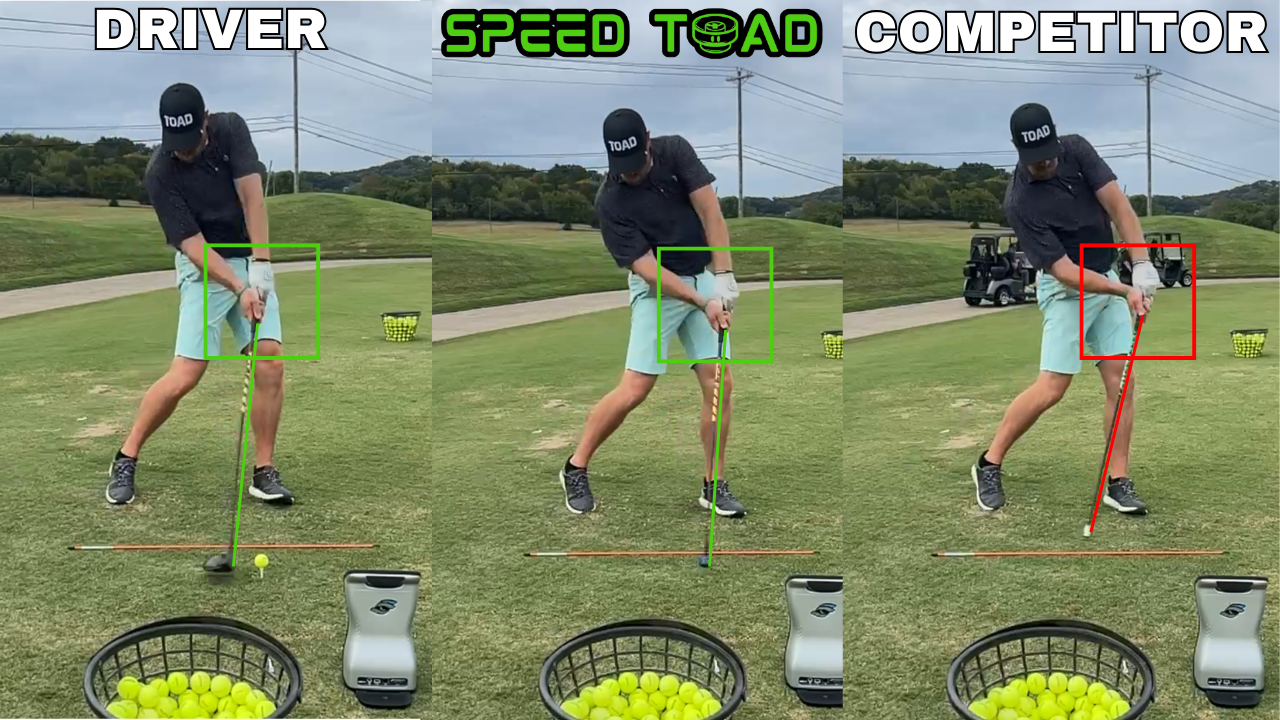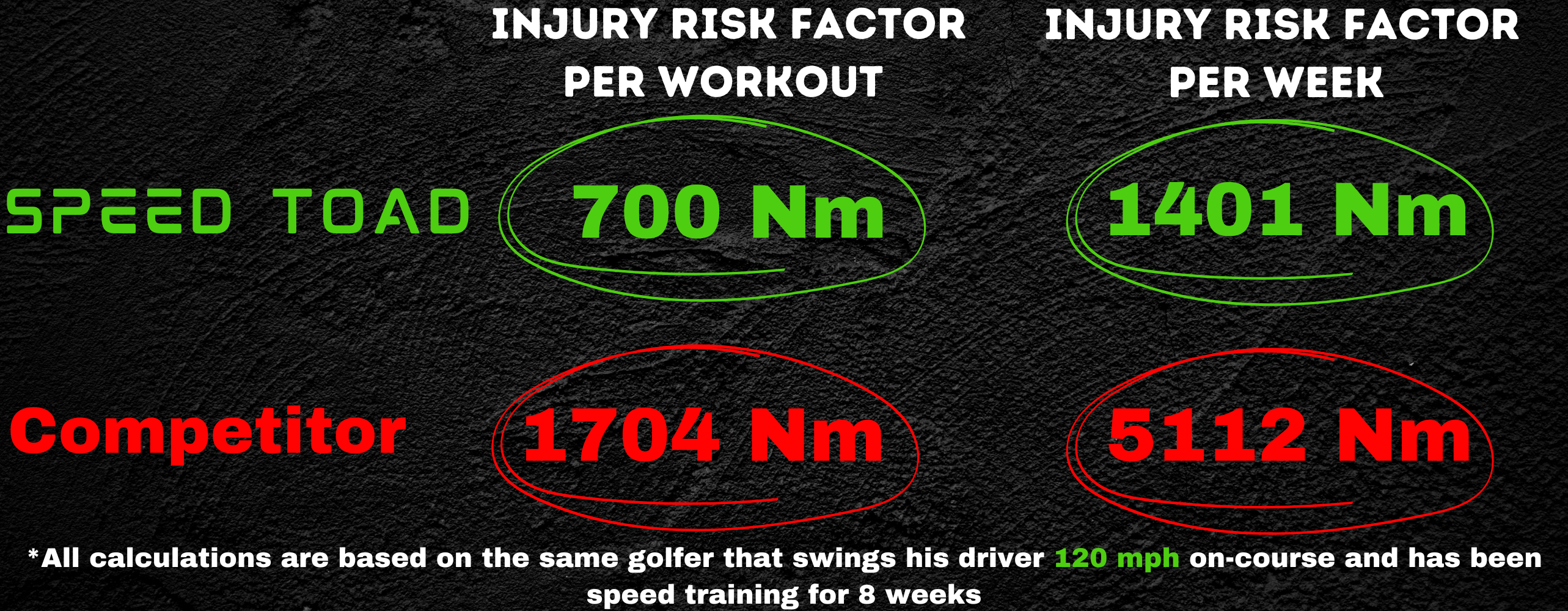Posted by Dr. Sam Attanasio on Nov 19th 2024
Golf Speed Training and High Injury Risk?
Myth: Golf speed training is associated with a high risk of injury.
Generally speaking, gaining distance in golf is considered the best way to improve your game and lower your handicap. This has left countless people looking to the internet in pursuit of more speed and distance. Golf speed training is one of the most misunderstood parts of the game (even amongst the "speed gurus" of golf) which often leads to improper implementation which unfortunately has left “injury” and “golf speed training” synonymous. However, is this truly the case? Let’s dissect the three main reasons why people associate golf speed training with a high risk of injury and see if "golf speed training" and "injury" are truly linked for life.
More Stress on the Musculoskeletal System
One of the biggest misconceptions about golf speed training is that it increases stress on the musculoskeletal system (joints, tendons, ligaments, muscles). Increased stress on your musculoskeletal system will certainly increase your risk of injury so does that make this case closed? Not even close.
First, we must dive into what actually is golf speed training. Although many associate golf speed training with using a variety of sticks of varying weights (light, medium, heavy), it actually is just training your body to move faster than normal with a golf club. Similar to how strength training trains the body to get stronger, speed training trains the body to move faster. Anything outside of moving faster falls into the strength training bucket and not speed training. So, while using a light or medium-weight training aid can be classified as speed training, anything weighing more than your driver is (and should be) classified as strength training.

Many speed training brands with variable weights, all have overweight swing training lumped together under one umbrella in their protocols, speed training. The reality is, with those and similar products, you are doing a combination of speed training (lighter weight swinging faster) and strength training (overweight swinging slower). In a previous article, we BUSTED the myth that overweight swing training aids help you swing faster. They, in fact, make you swing slower. But even worse, they increase your risk of injury. Here’s why:
The torque (rotational force required to move and stop the club) produced by your body per swing with an overweight training aid is more than swinging your driver. This means that even though you are swinging the heavier object slower, it still requires more torque which puts more stress on your tendons, ligaments, joints, and muscles. Simply put, increased torque in the swing equals increased stress on the body which equals an increased risk of injury.


The exact opposite is true when it comes to underweight training aids like the Speed Toad. Even though each swing is faster, the torque required to generate this speed per swing is less than even your own driver. This means that speed training with the Speed Toad is LESS risk of injury than even swinging your own driver due to less stress on your tendons, ligaments, joints, and muscles.
Poor Technique
This brings the next piece into the equation, technique, which has two parts. The first is that overweight training aids create poor technique and bad habits. The heavier an object gets, the more difficult it is to physically maintain proper form. It is much harder and requires more strength and flexibility to maintain safe and proper positioning when a heavy object is pulling/pushing you out of position. Again, the opposite is true for underweight training aids (see a pattern forming?). The lighter weight is easier to control and since it puts less stress on your body, it is easier to maintain proper and safe swing form.

The second is found in the shaft. Every shaft is different and requires a different swing pattern to release the shaft at the ball. When it comes to speed training aids that use a generic stick instead your golf shaft, all the sticks are the same for every person. Every single golfer (from the fast swinging PGA Pro to your typical senior golfer) uses the same rigid stick which reacts much differently than their individualized driver shaft. This forces you to change your technique and ultimately puts you at a higher risk for injury due to worse form.
Here is an example with the 2022 Long Drive World Champion Martin Borgmeier swinging his speed training aid vs his driver. You can see the difference in release pattern due to different shafts (the training aid swing being much more flippy through impact with his hands remaining in the same position).
Likewise, here is former Professional Long Driver and scratch golfer Bryce Mooney swinging his driver, a Speed Toad, and a light speed training stick (in order). Bryce releases the lag/his wrists way too late when using a rigid stick (equalling a massive slice) but notice the similarities in release when training with the Speed Toad and his OWN driver shaft. The combination of lighter weight and your own driver shaft is the best combination for maintaining proper form with no technique breakdown which greatly reduces the risk of injury while other methods including overweight swing training or rigid sticks increase the risk of injury.

Seeing this, it is not surprising that the former World Champion Martin Borgmeier decided to copy Speed Toad and begin speed training with his own shaft to mitigate technique breakdown and ultimately injuries.

Volume
Volume also plays a large role in the overall risk of injury when golf speed training. Volume is the amount of work (sets and reps) on a training day or throughout a training week. If the volume is too high, the body cannot recover between training sessions which increases the risk of injury. Every protocol is different but when judging training volume, it is important to view swing count and the stress each swing has on the body. As mentioned earlier, the more torque generated per swing, the more stress on the body to produce that force which increases your risk of injury.


Here are two examples of total torque production throughout a typical competitor workout and a typical Speed Toad Workout. Not only are there significantly more swings in the competitor’s workout but there is significantly more torque being generated each swing throughout an entire workout. Now multiply that force across multiple weeks or even multiple months. Getting too much volume greatly increases your risk of injury.
Conclusion
After reviewing three main categories associated with injury (stress on the musculoskeletal system, poor technique, and too much volume), two main things cause the association of golf speed training with injury: heavy training aids and rigid sticks. If you want to be safe and protect your body when it comes to golf speed training, ditch the sticks and overweight training aids and speed train with your own driver shaft with the Speed Toad.


